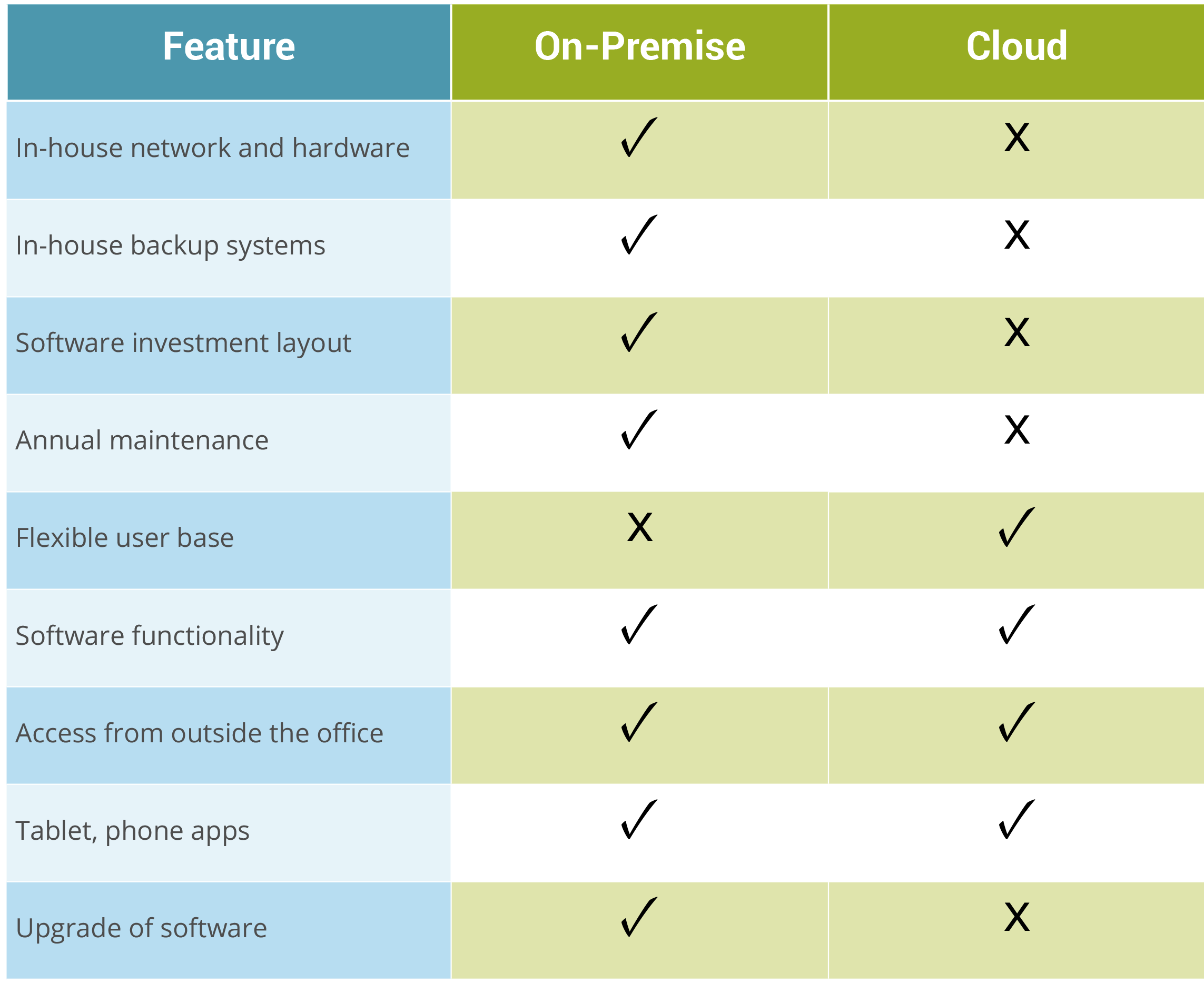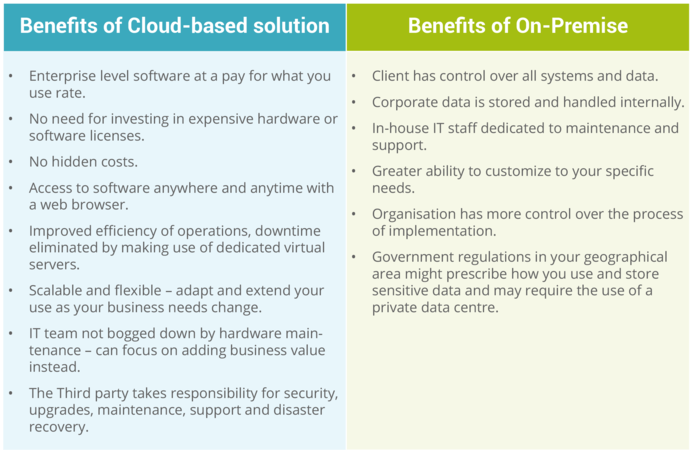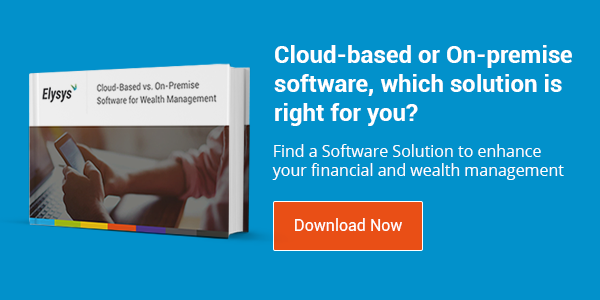Cloud-based Computing vs. On-Premise for Wealth Management
According to Forbes magazine, independent research and advisory firm Áite Group recently did a survey of 29 senior technology executives from financial institutions. The study found that 50% of respondents rated their organisation likely or highly likely to use Cloud Computing services within the next 24 months. The other 50% did not foresee a move to Cloud anytime soon.
Statistics like these show that when it comes to the Financial Industry, the issue of Cloud vs. On-Premise is a sticky one. Strong opinions for, and against Cloud-based computing have been heard from major banks and financial firms, which leaves independent wealth managers out in the cold to do their own research.
Are you finding yourself in this position? Here's a few features, benefits and challenges of Cloud-based and On-premise applications to consider as you make your way towards a solution for your wealth management needs.
Cloud-based vs. On-Premise: From Feature to Fortune
If your primary goals are to simplify your wealth management while keeping costs down, and infrastructure at a minimum, the following direct comparison of Cloud-based vs. On-Premise Solutions will be useful for understanding the difference in features, as well as the direct and indirect impact on expenditure.

In-house network and hardware
Installing applications in your office requires an infrastructure, which means buying expensive servers, operating systems, database system and more. Above all, you need to employ IT support technicians and provide them with the capability to maintain and upgrade these assets. The initial, as well as on-going costs, can be very high and probably overkill if you have a small operation and limited business activities.
On the other hand, the Cloud offers you the assurance that your systems will always have the latest updates installed, and someone else has the headache of employing staff to do all the work.
In-house backup systems
Systems backup and availability for restore can be time-consuming and expensive procedures when taken on in-house. The Cloud removes that concern and can even provide you with copies of periodic backups for your safekeeping.
Software investment layout
When choosing a Cloud solution, no cash outlay in software is required. Monthly charging does not necessary mean cheaper costs over extended periods of time, but gives a cash flow flexibility that is preferred by some users.
Annual maintenance
Buying software inevitably results in annual maintenance charges. These are mainly incurred to enable users to upgrade to a new version without having to buy the software again. With the Cloud model, you don’t buy software, which means that there aren’t any maintenance fees.
Flexible user base
A Cloud-based solution allows you to start with one or more users and scale as you go without incurring penalties – even if you reduce the number of users.
An On-premise option requires you to start with a minimum of 3 user licenses, with additional license purchases as needed. There are, however, no refunds for downsizing your number of users.
Software functionality
No differences.
Access from outside the office
You may need to access your system or reporting tools from different locations. Both the On-Premise and Cloud solutions will allow you to do that, but bear in mind that the On-Premise solution will need specific configuration of the infrastructure to meet security requirements. The Cloud, of course, has all the features built in by default.
Tablet, phone apps
Both systems will allow you to run the software from apps on your Mac, iPad, Android phone, etc., but setup costs will be incurred when ‘access from outside the office’ is required from an On-premise solution.
Upgrade of software
An on-going maintenance agreement will provide On-premise clients with software upgrades at no additional charge. However, costs will be charged for the additional services of installation and migration of data on the infrastructure to the new version. A Cloud Solution includes all the costs related to software upgrades in the monthly fee.
Measuring up the Benefits
Suitability for Business Scenario
Cloud-based Solutions are ideal for scenarios such as Single-family Offices and High Net Worth individuals managing a significant personal portfolio with little help from accounting staff. Cloud solutions fulfil the need for an uncomplicated and user-friendly process that delivers,
- recording of financial transactions,
- basic performance evaluation and reporting,
- simplified financial management tasks such as bank and cash management, and
- the productions of accounts.
An On-premise Solution is generally the preferred choice in the case of regulated financial institutions with a need for in-depth financial analysis, performance reporting and Business Intelligence, where an in-house infrastructure and IT support system is already in place.
Financial Accounting Systems for Wealth Management
Are you seeking more information to guide you to a Software Solution for your financial accounting and wealth management systems? Learn more about the topic by downloading our FREE eBook now.

